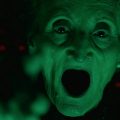
I somehow like the idea that, in an apocalyptic world, right at the edge of human disappearance, people would still be dancing. But like, literally, imagine they would dance until death comes. As a way of embracing that last moment of life, almost welcoming it, as a compulsory reaction of their bodies feeling the end, needing to move, contorting, overexcited and irrepressible, going against gravity once more, like an animal’s resistance against the inevitable fate. In the first day of this year’s Sitges Film Festival, we all felt the magic of one of the oldest arts palpitating on the big screens loud and clear, the kind of cinema that does not leave you indifferent.
Brought to life by one of the currently in the spotlight Italian directors as a remake of the Giallo horror classic, Suspiria inaugurated this year’s festival edition, while taking the chance to award one of its protagonists, the so talented Tilda Swinton, with the Grand Honorary Award. Luca Guadagnino (Call me by your Name (2017), A Bigger Splash (2015)) shows us once more his audacity for reinterpreting the classics, while still surprising for having the courage to try a new genre in his filmography. With a very solid historical basis, he develops the original plot of an American girl going to a dance school in the Berlin of the 70’s: through a plural and multifaceted cast, composed mainly of female characters, his recreation of the divided city and its tense atmosphere during the dark years of the wall is brought back to life, and manages to entertain throughout two and a half hours of film (not to forget it was shot in 35 mm). Sometimes guilty of wanting to cover too many things, still mastering in guiding cameras and art, Guadagnino does a remarkable job while telling the witches story through those looks, those presences, and those dances (with roots on the German scenario of that time). We get to experience dance in a very raw way, in connection to esotericism and rituals, but also with very primary impulses that somehow may contain the opposing forces of life and death. Again, the young replaces the old in an eternal cycle, with beauty and cruelty in the same amount.
On the other hand, the latest film by Argentinian director Gaspar Noé (Enter the Void (2009), Irreversible (2002)) revolves and develops itself as one long dance, that catches and does not let go you until the end. Planned as a two sequence shots, with some improvised scenes added while shooting (same as improvised parts of the plot, following the director style), the low budget, only 15 days shooting film, strikes almost with force as a very simple yet succeeded piece of contemporary dance with resonances on the difficulties of living in the collective at this our times. A great commanding of the camera point of view (helping with the immersive experience) and with modesty as strength, this rollercoaster with climax point and posterior collapse as the Babel tower, can be a surprising (even kind of familiar) experience for some of us, picturing the delirium and craziness of parties, alcohol and people all combined. With a non-stop, also enveloping soundtrack made from the 80s-90s, the journey through the human experience is definitely a bumpy road, which can become even trickier with drinking (as the director himself said, the worst situations he witnessed in this life involved alcohol). A film that can be taken literal, the film Noé had more fun working on, and maybe the most accessible of his works so far.




